8 Tourist Places To Visit In Manali
By: Priyanka Maheshwari Sun, 04 June 2023 11:56:26
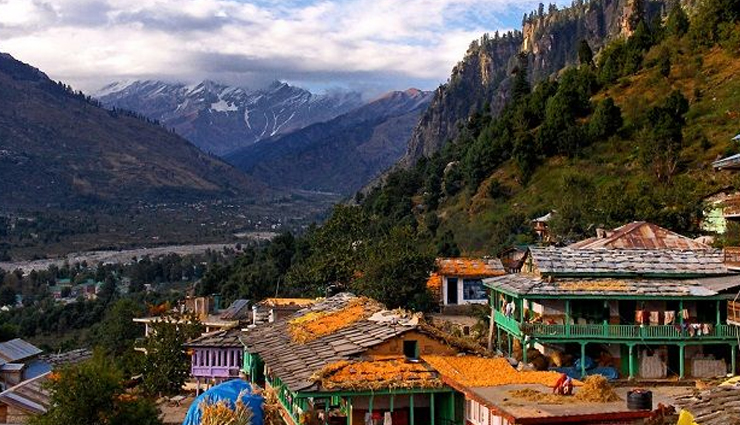
Manali is a breathtaking hill station located in the state of Himachal Pradesh. Situated in the northern end of the Kullu Valley, Manali is nestled amidst the majestic Himalayas, offering mesmerizing natural beauty and a pleasant climate. It is a popular tourist destination known for its scenic landscapes, snow-capped mountains, lush valleys, and adventure activities.
The town of Manali is surrounded by towering peaks, with the Beas River flowing through its heart. It is a gateway to numerous trekking trails, including the famous Rohtang Pass and Solang Valley. Manali is also renowned for its apple orchards, dense pine forests, and picturesque meadows. The town is dotted with charming wooden houses, ancient temples, and Tibetan monasteries, reflecting its rich cultural heritage.
Adventure enthusiasts flock to Manali to indulge in thrilling activities like paragliding, skiing, river rafting, and mountaineering. The region also offers opportunities for exploring nearby attractions such as the hot springs of Vashisht and the spiritual retreat of Manikaran.
In addition to its natural beauty, Manali offers a vibrant marketplace where visitors can find traditional handicrafts, woolen garments, and local delicacies. The town's warm hospitality and serene ambiance make it a favorite destination for travelers seeking tranquility and rejuvenation.
Whether you are an adventure seeker, nature lover, or someone looking for a peaceful getaway, Manali has something to offer for everyone, making it a must-visit destination in the Indian Himalayas.
Manali is blessed with numerous tourist attractions that cater to a wide range of interests. Here are some popular places to visit in Manali:

# Rohtang Pass
Rohtang Pass is a high mountain pass located in the Pir Panjal Range of the Himalayas. It is situated at an elevation of approximately 3,978 meters (13,050 feet) above sea level. The pass connects the Kullu Valley with the Lahaul and Spiti Valleys.
The word "Rohtang" means "pile of corpses" in the local dialect, reflecting the hazardous terrain and perilous aspect of the pass that gives rise to its name. It is notorious for having erratic snowstorms and blizzards, which prevent travel throughout the winter.
Rohtang Pass is renowned for its scenic beauty and is a popular tourist destination. The pass offers breathtaking views of snow-capped mountains, glaciers, and the surrounding valleys. It is also a gateway to Leh and Ladakh regions, as it lies on the Manali-Leh Highway.
Rohtang Pass frequently sees considerable traffic during the busiest travel season due to its popularity. The Indian government has put limits on how many cars may drive through the pass each day in order to protect the area's delicate environment. Both private and commercial vehicles need permits, and the pass is closed on Tuesdays for repair.
Apart from its natural beauty, Rohtang Pass also serves as a base for various adventure activities. Tourists can engage in skiing, snowboarding, and trekking in the surrounding areas. The pass is also home to several ancient temples, such as the Rahala Falls and the Dashir Lake.
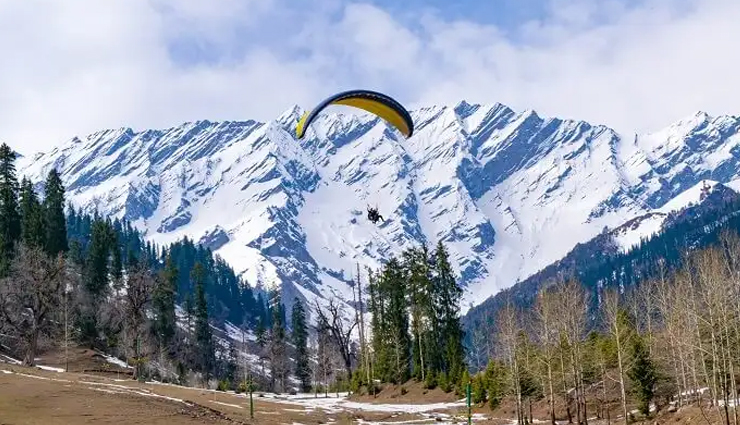
# Solang Valley
Solang Valley is a beautiful valley close to the famed hill resort of Manali. It is located around 14 km northwest of Manali and is recognised for its breathtaking natural beauty and adventurous activities.
The valley is flanked by tall snow-capped mountains and rich foliage, providing tourists with stunning vistas. It is particularly well-known for its winter activities and is known as Manali's "Snow Point." During the winter, the valley is blanketed with snow, making it a great place for skiing, snowboarding, and sledding.
Solang Valley, in addition to winter sports, offers a variety of adventure activities during the summer season. Paragliding, zorbing (rolling downhill inside a translucent plastic ball), rappelling, rock climbing, and quad riding are among the sports available to visitors. The natural scenery of the valley is ideal for these adrenaline-pumping encounters.
Throughout the year, Solang Valley draws a great number of tourists, both adventure seekers and environment lovers. The valley is easily accessible from Manali, and taxis and buses are available for local transportation. Visitors may spend the day exploring the valley, taking in the breathtaking views, participating in adventure activities, or simply relaxing in the tranquil surroundings.
Along with adventure sports, Solang Valley also has amenities like restaurants, cafes, and souvenir shops catering to tourists' needs. Horse riding and camping facilities are also available for those who wish to extend their stay.
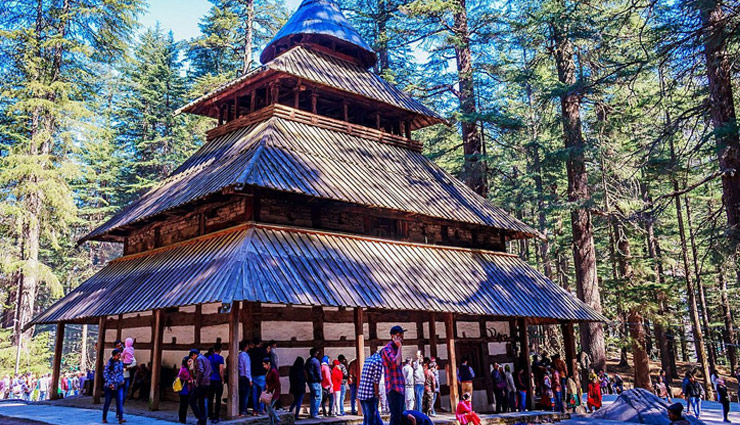
# Hadimba Temple
Hadimba Temple, also known as Hidimba Devi Temple, is a historic temple in Manal. It is named after Hidimba Devi, a figure from the Mahabharata, an Indian epic. The temple is located in the midst of lush cedar trees, approximately 2.5 km from Manali's Mall Road.
The Hadimba Temple, which is recognised for its unusual architectural style, is said to have been erected in the 16th century. The temple is composed of wood and is built in the shape of a pagoda, with finely carved wooden panels and a three-tiered roof. The carvings on wood show mythical creatures, animals, and symbols.
The temple is set in a tranquil and picturesque location, surrounded by towering deodar trees. It is a popular tourist attraction and attracts devotees as well as visitors interested in the cultural and architectural heritage of the region.
The primary deity of the temple, Hidimba Devi, is revered as a goddess and is considered a protector of the region. According to mythology, Hidimba Devi was the wife of Bhima, one of the Pandava brothers from the Mahabharata. Devotees believe that she possessed supernatural powers and would meditate in the area where the temple now stands.
The temple complex also includes a shrine dedicated to Ghatotkacha, the son of Hidimba Devi and Bhima. Ghatotkacha is worshipped as a deity in the temple and is considered a guardian and protector.
The Hadimba Temple holds great religious significance and is a venue for several festivals and rituals throughout the year. The most prominent festival celebrated at the temple is the Hadimba Devi Fair, which takes place in the month of May. During the fair, devotees gather to offer prayers, perform traditional dances, and participate in cultural activities.
Visitors may explore the temple's tranquil settings, seek blessings, and marvel at the magnificent woodwork and architecture. It is best to double-check the temple's hours and dress requirement before going.
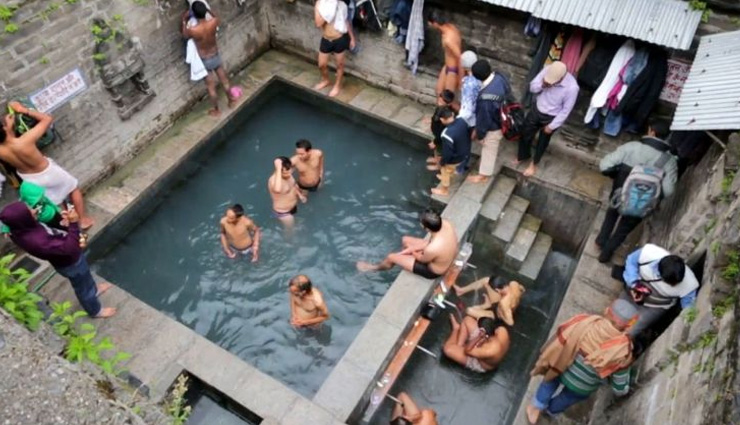
# Vashisht Hot Springs
Vashisht Hot Springs is a natural hot water spring near Manali in the town of Vashisht. The hot springs are named for the philosopher Vashisht, who is supposed to have pondered here in ancient times.
The Vashisht Hot Springs are well-known for its medicinal powers and are a major tourist and local attraction. The spring water is naturally heated by geothermal activity and is rich in minerals such as sulphur, which is said to have therapeutic powers for some skin problems and disorders.
The hot springs are part of a larger complex that includes multiple bathhouses and pools where guests may enjoy the hot water. These pools are gender-segregated and utilised for bathing and leisure. The water temperature varies, with some pools offering greater temperatures than others.
Apart from the hot springs, the village of Vashisht is also known for its ancient Vashisht Temple, dedicated to sage Vashisht. The temple is believed to be more than a thousand years old and features intricate woodwork and stone carvings. Many visitors combine a visit to the hot springs with a visit to the temple.
Vashisht is located just a couple of kilometers from Manali, and it can be reached by road or by taking a short hike from Manali. The hot springs and the village itself offer a serene and picturesque environment, surrounded by the stunning landscape of the Himalayas.

# Manikaran
Manikaran is a small town located in the Parvati Valley, near Manali. It is known for its natural hot springs, religious significance, and picturesque surroundings.
Manikaran is a town on the Parvati River's banks, surrounded by tall mountains and beautiful flora. It is most renowned for its hot springs, which have therapeutic effects due to its high mineral content. Both Hindus and Sikhs regard the hot springs in Manikaran as sacred, and a considerable number of worshippers and visitors visit.
The hot springs in Manikaran are formed due to geothermal activity, where water is heated by volcanic sources beneath the earth's surface. The water is rich in minerals like sulfur, and people often take baths in these hot springs for relaxation and therapeutic purposes. The temperature of the water can vary in different pools, with some being extremely hot.
Apart from the hot springs, Manikaran is also famous for its religious sites. The town is home to the Manikaran Sahib Gurudwara, a revered Sikh shrine. According to Sikh tradition, Guru Nanak Dev, the founder of Sikhism, visited this place with his disciples. The gurudwara is considered a significant pilgrimage site for Sikhs and offers langar (community kitchen) where free meals are served to visitors.
Additionally, Manikaran has a Hindu temple dedicated to Lord Shiva and the Goddess Parvati. It is believed that Lord Shiva and Goddess Parvati stayed in Manikaran for several years. The temple attracts Hindu devotees who come to seek blessings and offer prayers.
Manikaran is also a popular location for trekkers. The town serves as a starting point for several hiking trails that go to the region's magnificent valleys, mountains, and high-altitude lakes.
Visitors to Manikaran may appreciate the natural beauty, swim in the hot springs, visit religious sites, and sample the local cuisine, which frequently includes unique dishes prepared with hot spring water.
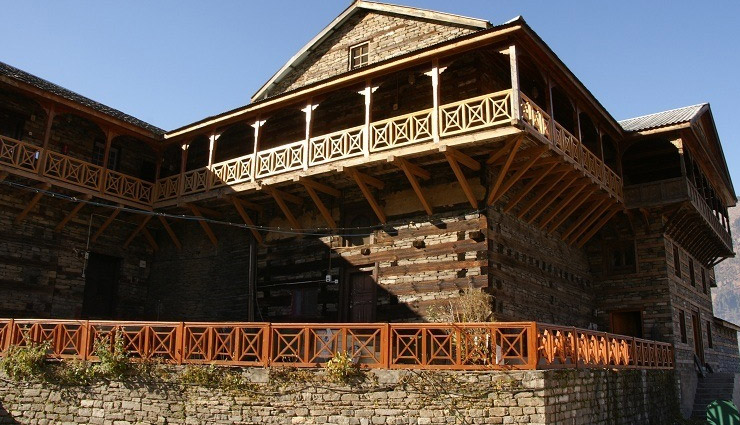
# Naggar Castle
Naggar Castle is a historical building in the Kullu district of Naggar, near Manali. Raja Sidh Singh of Kullu erected it in the 15th century.
Naggar Castle is located on a mountaintop overlooking the lovely Kullu Valley. It is constructed of wood and stone, and its architecture is a fusion of Himalayan and European traditions. Panorama views of the surrounding mountains, valleys, and the Beas River are available from the castle.
The castle has served as a royal residence for many centuries and was the seat of power for the Kullu kingdom. Today, it has been converted into a heritage hotel and museum, offering visitors a glimpse into the rich history and culture of the region.
Naggar Castle's interior boasts beautifully carved wooden doors, windows, and balconies. The castle holds a collection of historic artefacts, traditional utensils, weaponry, and artwork that provide insight into the region's history. The castle's museum displays traditional Kullu and Himalayan art, including paintings, sculptures, and religious artefacts.
The Tripura Sundari shrine is a modest shrine dedicated to Lord Krishna within the castle. The temple attracts both worshippers and tourists because to its beautiful wood carvings.
Visitors to Naggar Castle can explore its various rooms, courtyards, and terraces, and soak in the serene ambiance. The castle's location amidst scenic surroundings makes it an ideal spot for photography and enjoying the natural beauty of the region.
Naggar Castle is easily accessible from Manali, and it's a popular tourist attraction for those seeking a glimpse into the rich history and architecture of the Kullu region.

# Tibetan Monasteries
Manali is home to numerous Tibetan monasteries that showcase the Tibetan people's rich cultural and religious legacy. These monasteries offer a calm and spiritual environment, attracting tourists seeking serenity, tranquillity, and a greater knowledge of Tibetan Buddhism. Here are some of the most important Tibetan monasteries in and around Manali:
Gadhan Thekchhokling Gompa: Located in the heart of Manali, Gadhan Thekchhokling Gompa is one of the most prominent Tibetan monasteries in the region. It is known for its impressive architecture, vibrant wall paintings, and a large statue of Lord Buddha. The monastery also offers meditation courses for those interested in practicing mindfulness and spirituality.
Himalayan Nyingmapa Gompa: Situated near the Manali Mall Road, the Himalayan Nyingmapa Gompa is a peaceful monastery known for its intricate woodwork and traditional Tibetan Buddhist paintings. It houses a statue of Lord Padmasambhava (Guru Rinpoche) and provides a tranquil environment for meditation and contemplation.
Gadhan Dhoeling Monastery: Located in the village of Kullu, a short distance from Manali, Gadhan Dhoeling Monastery is a beautiful Tibetan Buddhist monastery. It features vibrant murals, traditional Tibetan architecture, and a peaceful prayer hall. The monastery also hosts various cultural events and festivals, offering visitors an opportunity to experience Tibetan traditions and rituals.
Sherabling Monastery: Situated in the village of Bhattakufer, near Manali, Sherabling Monastery is the Indian seat of the Tai Situpa lineage of Tibetan Buddhism. The monastery is known for its grand architecture, golden statues, and stunning views of the surrounding mountains. It offers meditation retreats and teachings for those interested in deepening their understanding of Buddhism.
These Tibetan monasteries not only serve as places of worship and spiritual practice but also act as cultural centers, preserving and promoting Tibetan traditions, art, and philosophy. Visitors can participate in prayer ceremonies, explore the monastic complex, interact with the resident monks, and even attend Buddhist teachings and meditation sessions.
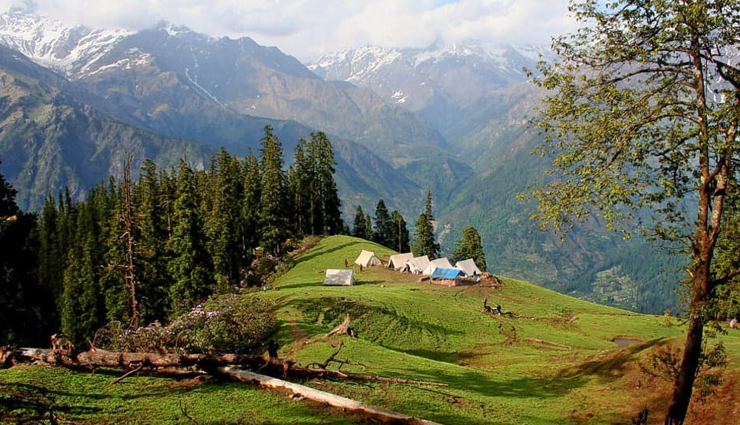
# Great Himalayan National Park
The Great Himalayan National Park (GHNP) is a national park in Himachal Pradesh's Kullu district, near Manali. It is a UNESCO World Heritage Site that covers around 1,171 square kilometres (452 square miles). The park is well-known for its rich flora and wildlife, as well as its breathtaking Himalayan scenery.
The Great Himalayan National Park, established in 1984, is known for its harsh terrain, deep valleys, alpine meadows, glaciers, and snow-capped summits. It has a large altitude variation, beginning about 1,500 metres (4,900 feet) and reaching over 6,000 metres (19,700 feet) at its highest point.
The park is home to a rich biodiversity, including numerous plant and animal species. It is known for its diverse birdlife, with over 375 species recorded, including the western tragopan, cheer pheasant, and Himalayan monal. Other wildlife found in the park includes Himalayan brown bears, snow leopards, musk deer, blue sheep, Himalayan tahr, and numerous species of butterflies and insects.
The Great Himalayan National Park offers various trekking routes and trails for adventure enthusiasts and nature lovers. These treks provide an opportunity to explore the park's stunning landscapes, remote villages, and high-altitude ecosystems. The Tirthan Valley, located within the park, is a popular starting point for many treks and is known for its pristine beauty.
Permits are required to enter the Great Himalayan National Park, and visitors are advised to obtain these permits from the park authorities in advance. It's also recommended to engage the services of local guides or tour operators who are knowledgeable about the park's rules and regulations, as well as its unique flora and fauna.
The park is a haven for nature lovers, offering opportunities for wildlife viewing, birdwatching, photography, and experiencing the serene Himalayan environment. It's important to note that certain areas of the park may have restricted access to protect its fragile ecosystem, so visitors should adhere to the designated trails and guidelines set by the park authorities.
These are only a handful of the numerous attractions in and around Manali. Exploring these locations will give you a flavour of the region's natural beauty, cultural richness, and adventure.





